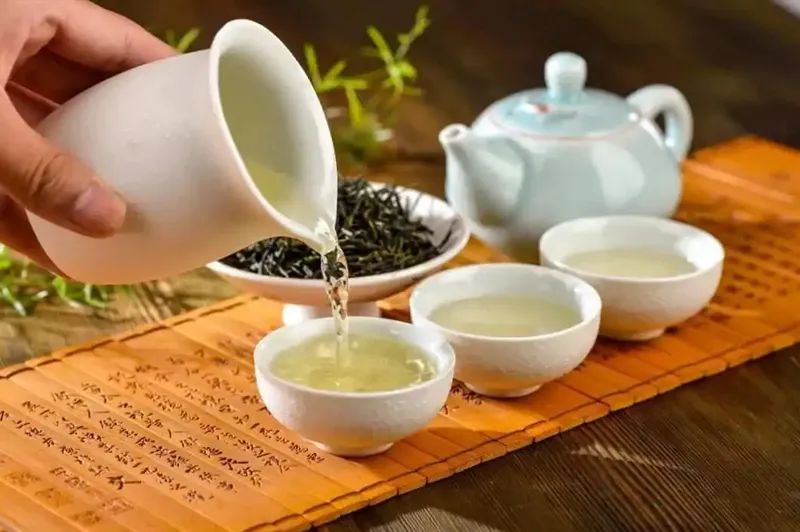top comprehensive Chinese tea culture in the world
The most comprehensive Chinese tea culture in the world
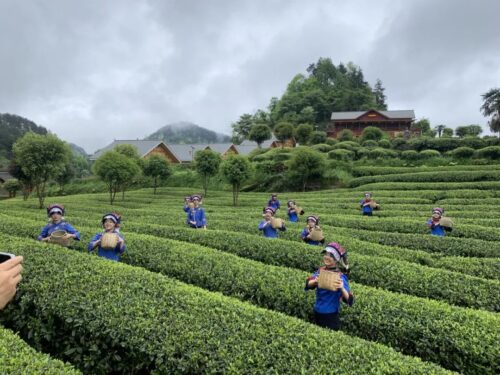
Tea, even just hearing the word, will make people think. As a highly representative item in Chinese culture, tea carries a variety of meanings such as mystery, elegance and intellectuality. Not only that, the deep cultural heritage and long historical background of tea make people feel its extraordinary charm.
In the bustling city, timely soak a pot of mellow tea, brew a cup of refreshing green tea, as if you can calm down and savor life. However, for many people, although tea is cherished, they do not know the history and story behind it. The purpose of this article is to provide readers with a basic introduction to tea, a comprehensive introduction to the history, classification, production, efficacy and tasting methods of Chinese tea culture. I believe that through the reading of this article, readers can better understand and experience this unique culture.
History of tea

Chinese tea culture can be traced back to more than 2000 BC. The following are the main developmental threads of Chinese tea history:
Origin period of tea (2000 BC to early Tang Dynasty) : Tea was used as medicine during this period, often in conjunction with medicinal materials. According to historical records, before the Tang Dynasty, the tea brewing method was to boil fresh tea leaves with water, and then add salt and other condiments.
Song Dynasty to Ming and Qing Dynasties (960 to 1911) : During this period, tea became popular as a drink, and different types of tea appeared, such as Baiyun tea, Huawu tea, Longjing tea, Bijian tea, Qingcheng mountain tea and other famous teas. In the Song Dynasty, tea culture reached its peak, tea art became extremely elegant, and detailed regulations were made for the ritual of drinking tea. In the Ming and Qing Dynasties, the development of China’s tea trade led to the rapid expansion of the production scale of tea and tea utensils, and more places had the opportunity to contact and absorb tea culture.
Modern period (1911-present) : With the development of modern industry and trade, the production and sale of tea is gradually commercialized, and related tea cultural activities are also widely spread to every corner. At the same time, with the upgrading of consumption and the improvement of health awareness of the younger generation, tea culture is also constantly innovative, changing and wonderful.
The methods used to produce, cook and taste tea in China for thousands of years have also evolved and improved. Today, China produces a wide variety of tea, each with its own unique flavor and cultural background. Tea culture is considered a very important and popular theme in China, and forms of culture such as tea sets, tea ceremonies, and tea art also bring deeper experiences to tea drinking in daily life.
Chinese tea culture has a long history. It is not only a drink, but also inherits and highlights China’s ancient and unique cultural concepts, aesthetic concepts and daily lifestyle. From the Han and Tang dynasties to the present, tea has become a clue that runs through the evolution of Chinese history and culture, and continues this broad and profound culture to the world.
Classification of tea
Tea is an extremely colorful drink that can be classified by several factors, such as color, craft, and geographical location. From the color point of view, China mainly has green tea, black tea, oolong tea, black tea, white tea, yellow tea and other six categories of tea. These teas will vary during picking and processing, presenting a unique aroma and taste.

Green tea is one of the most common and major tea leaves in China. Its tea leaves have a pleasant smell and an endless aftertaste, which makes it very suitable for daily life.
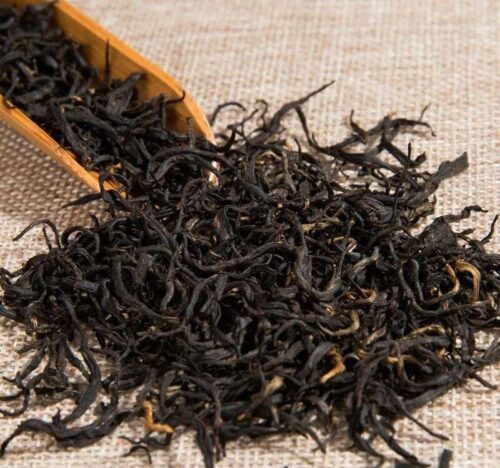
Black tea is known as “red all over the world”, its rich taste, mellow, has also been widely recognized. Yunnan red tea, Keemen black tea, Zhengshan small species, etc. are representative varieties of black tea, accounting for 80% of the global tea market.
Compared with green tea and black tea, yellow tea is relatively unpopular, but it also has a unique flavor and cultural value. Huoshan yellow bud, Junshan silver needle and so on are well-known varieties of yellow tea, yellow tea required more complex technology, so its price is higher than other tea.
Green tea is also one of the important types of Chinese tea. Among them, oolong tea is very sought after, and its tea has both the fresh taste of green tea and the rich aroma of black tea, and the production process is also very sophisticated. Phoenix single cluster, Oriental beauty, Wuyi rock tea, Tieguanyin, Dahongpao (three pits and two streams), Zhangping Narcissus and other well-known varieties of green tea.
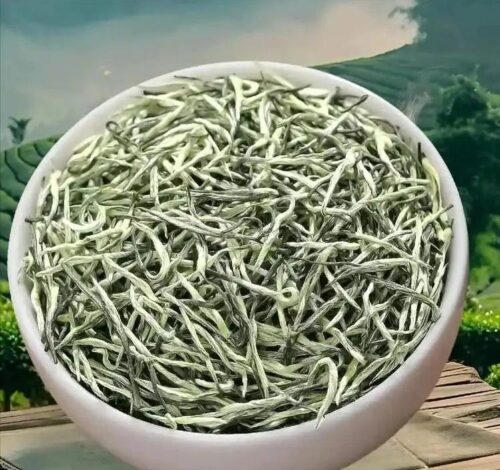
White tea has long been one of the treasures of Chinese tea culture, tea taste light, yellow color, each cup of tea drink like “water fairy” as fresh and pleasant. Fuding white tea (silver needle, peony, Shou Mei), moonlight white, etc. are representative varieties of white tea.
Finally, there is dark tea. This type of tea is characterized by fermentation, and the longer the tea is stored, the more intense its flavor will be. Anhua dark tea, Pu ‘er ripe tea and so on are popular black tea varieties. In general, there are many varieties of tea in China, each of which has its own specific growing environment, picking and processing methods, and also carries its own unique historical culture and regional flavor.
According to the classification of technology, tea can be mainly divided into three categories: fermented tea, semi-fermented tea and non-fermented tea. For example, black tea is a fermented tea, oolong tea is a semi-fermented tea, and green and white tea are both non-fermented teas.
In addition, geographical location is also an important way to classify tea. China has many famous tea producing areas, such as Yunnan, Fujian, Zhejiang and other places are producing famous tea, known as the big tea mountain famous tea. At the same time, different tea making techniques and basic environmental conditions in different places have also formed local famous teas and special scented teas with local characteristics.
Tea has a rich classification, each tea not only has its own unique taste and quality characteristics, but also carries a rich history and culture and local characteristics.
Tea producing
The production process of tea varies according to the variety of tea and the region in which it is located, and can generally be divided into the following steps.
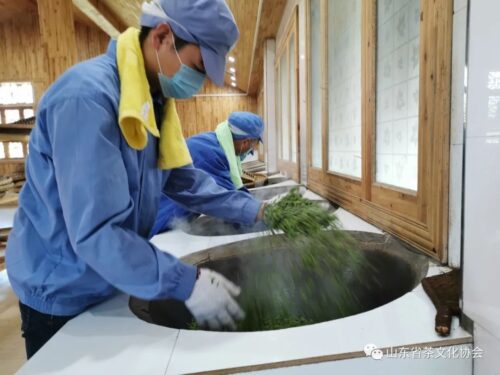
1, fresh leaf picking
When picking, choose fresh buds, pick them off and quickly send them to the processing plant. In addition, in the picking process, it is also necessary to pay attention to the time and way of picking, so as not to cause damage to the tea tree.
2. Let cool
Place good tea leaves in a ventilated and dry place to cool them so that they lose excess moisture. Cool the time to master, do not let the tea consume too much nutrients, but also to prevent tea discoloration or mold phenomenon.
3. Knead
The tea leaves will be rolled after cooling, so that the tea can form a curly state and improve the degree of fermentation of tea. When rolling, it is necessary to control the strength of rolling, and pay attention to the time of rolling.
4. Fermentation/green treatment
Part of the tea needs to go through the fermentation process and part of the tea needs to go through the green treatment, depending on the processing technology of the tea. Fermentation is to promote the chemical changes inside the tea through moist environment, so as to achieve the purpose of flavoring and improving the color and flavor characteristics. Green treatment is done by drying the freshly picked tea leaves to prevent them from fermenting.
5. Bake/kill
The baking process is to dry the fermented tea at high temperature, in this process there will be a strong aroma and taste diffusion, different types of tea baking temperature and time are not the same. The green is the use of low temperature and rapid treatment of tea, cut off the metabolism of tea cells, so that it remains fresh and green.
6, graded packaging
After the above steps, the tea will be graded and put into different sizes of bags. Grading can be carried out according to the shape, color, size and other indicators of the tea to facilitate sale or taste needs.
Each production step is very important, and if any one of them goes wrong, it can have a significant impact on the final quality of the tea. Therefore, the manufacture of high-quality tea requires good technology and strict operating processes.
Classification of tea
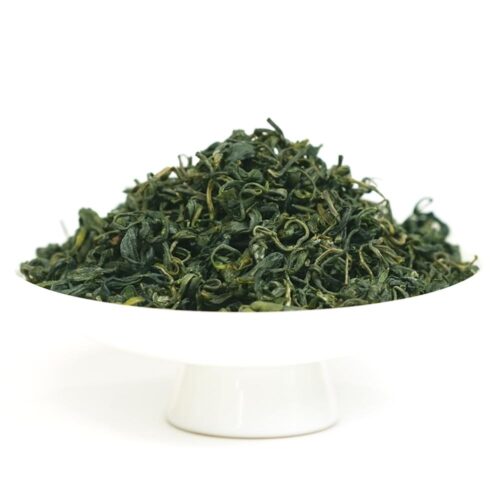
Chinese people have a long history of tea drinking, and tea drinking culture grows along with Chinese civilization. Tea not only can play a refreshing effect, eliminate fatigue and relieve stress, but also can adjust the mood, with moistening the lungs, clearing fire, sterilization and pain, good for health.
Green Tea:
Green tea is unfermented tea, high amino acid content, tea soup clear, fresh. Green tea is cold, can clear fire and clear eyes, eliminate internal toxins in the body, and has a good effect on lowering body temperature and treating heat. It is rich in polyphenols, which can refresh the mind and enhance concentration and memory. However, green tea should not be drunk on an empty stomach, and people with gastrointestinal sensitivity should be careful.
White Tea:
White tea is a slightly fermented tea, the tea soup is ivory white, fresh and delicious. White tea is cold, can play a role in clearing heat, moisturizing skin and reducing blood lipids, blood sugar and other effects. Rich in polysaccharides, it has immunomodulatory function. We recommend choosing old white tea that has been mature for more than 3 years to obtain better taste and nutritional value.
Yellow Tea:
Yellow tea is tea that is lightly kneaded and then specially baked, which is called “dull yellow process”. Its tea soup is yellow, with a certain bitter and aromatic flavor. Yellow tea is cool, can clear heat and detoxify, moisten lungs and remove body moisture, contains a variety of effective ingredients, can prevent cancer, sterilization, anti-inflammatory and so on. Yellow tea is more difficult to store, we recommend storage time should not exceed 6 months.
Natural Green Tea:
Natural Green tea is a semi-fermented tea with a complex production process. These include special twisting methods and unique baking techniques to reveal the rich flavor of the tea. Green tea is very beneficial to the digestive system, can help reduce stress and relieve anxiety, and can also prevent loss of appetite. But it should not be drunk on an empty stomach, and should not be drunk.
Black Tea:
Black tea is a fully fermented tea leaf with a deep red color, rich aroma and smooth taste. Black tea is very popular all over the world because of its taste to suit all tastes, and it is especially helpful in protecting stomach health and eliminating internal fatigue in the body. Black tea is also suitable for people to drink in the morning, which can play a role in adding water and improving work efficiency.
Dark Tea:
Dark tea is tea that has undergone post-fermentation treatment. It can get older and stronger with time because of the chemical reactions that occur during storage. The dark tea soup is red and brown in color, with mellow and smooth taste. It has the effect of moistening bowel, relieving food and reducing fat, and can protect the heart and regulate the gastrointestinal function. It is a delicious choice suitable for drinking after eating.

Zinc Selenium Tea
it’s well-known asproduce from Yongan Town, Fenggang County, Guizhou province, in addition to the contents of priority organic naturally green tea, which is rich in over 17 Trace element and zinc, selenium, potassium, calcium and other minerals and trace elements required by the human body. The zinc content is 40~100mg/kg, and the selenium content is 0.25~3.5mg/kg. Long-term consumption has the following advantages
1. Refreshing and refreshing: zinc selenium tea contains caffeine, which can stimulate the central nervous system and play a role in awakening and refreshing.
2. Anti-oxidation and anti-aging: tea polyphenols in tea have strong antioxidant properties, which can clear free radicals in the body and delay aging.
3. Enhance immunity: Zinc selenium tea can increase the content of antiviral interferon in the body, thereby enhancing human immunity and helping to fight infection.
4. Promote bone health: Zinc and selenium, two trace elements, are very important for bone and tooth health and can help prevent osteoporosis and rickets in children.
5. Protection of cardiovascular blood vessels: tea polyphenols can affect fat metabolism and help prevent cardiovascular diseases, such as atherosclerosis.
6. Help digestion: Caffeine in zinc selenium tea can promote the secretion of gastric juice, help digestion, suitable for drinking after meals.
7. Lose weight: Studies have shown that long-term tea drinkers have a lower percentage of body fat than non-tea drinkers, and tea can also aid digestion and boost metabolism.
8. Protect the liver: Zinc selenium tea helps to protect the liver and promote the normal operation of liver function.
9, prevent hair loss: Zinc plays an important role in keeping hair healthy, and zinc deficiency may lead to hair loss.
10. Anti-cancer effect: Tea polyphenols and other compounds in zinc selenium tea have certain anti-cancer effects, which can inhibit the growth and spread of cancer cells.
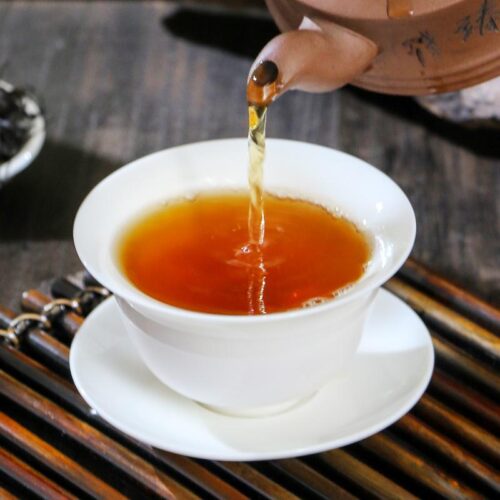
A taste of tea
Tea tasting is a cultural activity with attention to detail. Here are the steps to taste tea:
Appearance: Carefully check the appearance of the tea, including tightness, integrity, feel and other factors.
Aroma: Smelling and distinguishing tea is the key to tasting tea. Put the tea into the cup and sniff it gently with your nose to sniff out the characteristics of the different aromas. For example, green tea often has a fresh, grassy aroma, while black tea has a floral, fruity aroma.
Taste: When tasting tea, pay attention to its taste and texture. Take a small bite and then savor each flavor. For example, tea leaves may appear bitter, fresh or sweet.
Color: It is important to observe the color and transparency of the tea. The cup should be kept clean and hygienic, allowing the tea to ferment sufficiently and produce sufficient soup color. The tea broth may vary in color, for example, light yellow for green tea and reddish brown for black tea.
Tea bottom: It is also very important to keep an eye on the bottom of the tea. The quality and origin of tea can be judged by the characteristics of the capillary size and color depth at the bottom of tea. For example, the bottom of Pu ‘er tea is brown red, while the bottom of Longjing tea is emerald green.
The following should also be noted when tasting tea:
Cup selection: For different kinds of tea, the appropriate cup should be used for tasting. For example, Biluochun tea recommends using a glass, while Tieguanyin tea requires a purple clay pot or a ceramic cup.
Tea storage: Tea should be stored in a dry and ventilated place before tasting tea to ensure its freshness and taste.
Environmental atmosphere: The environmental atmosphere is also very important when tasting tea, it is best to choose a quiet and comfortable place to ensure concentration on the tasting.
Conclusion
Chinese tea culture has a long history and a long history, which reflects the profound cultural heritage of the Chinese nation. Chinese tea has rich variety, unique flavor and unique cultural connotation, so that people can taste the essence of traditional Chinese culture while tasting tea.
Tea tasting is an important part of Chinese tea culture. Through tasting and experiencing, people can feel the warmth of tea fragrance, the elegance of tea soup and the beauty of tea utensils. In the process of tea tasting, you can not only enjoy the taste and taste brought by tea, but also understand the types of tea, production technology and efficacy, and have a deep understanding of the connotation of Chinese tea culture.
The essence of the tea ceremony is not limited to drinking tea, but the experience of drinking tea. The detailed tasting process from the appearance, aroma, taste, soup color and tea base is not only an aesthetic experience, but also a kind of spiritual and cultural exchange. When tasting tea, you can enjoy the changes of tea leaves stretching in the cup, listen to the sound of boiling water, listen to the breath and charm conveyed by the tea.
The essence of the tea ceremony also includes etiquette and humanistic aspects. In the process of tea tasting, pay attention to correct sitting posture, slow movements and elegant gestures. At the same time, we should also learn to appreciate and evaluate the quality of tea, appreciate the comfortable experience and sensory enjoyment brought by tea.
Chinese tea culture is a profound, natural and pure culture with rich humanistic connotation. In this era of openness and diversity, tea tasting provides us with an opportunity to regain purity and pursue inner peace, and it is also a spiritual experience with unique cultural heritage.

